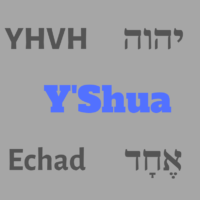 Since my previous article on head coverings , I have learned a lot from the questions I have received. I appreciate all the feedback and have decided to put it together in a document. I just find it easier to refer to later. I want to invite you to give me your opinion on this also. Head covering is in my opinion more important than we think. It is a symbol of Yahovah’s authority. It is however not a salvation issue and definitely not something that should cause disunity. This is also not the purpose of writing this. I want to give you my view on it and share it with you because of the blessings I enjoy since I wear it.
Since my previous article on head coverings , I have learned a lot from the questions I have received. I appreciate all the feedback and have decided to put it together in a document. I just find it easier to refer to later. I want to invite you to give me your opinion on this also. Head covering is in my opinion more important than we think. It is a symbol of Yahovah’s authority. It is however not a salvation issue and definitely not something that should cause disunity. This is also not the purpose of writing this. I want to give you my view on it and share it with you because of the blessings I enjoy since I wear it.
Your view on this is also dependent on how you view the Apostolic Scriptures. Do you see any instruction given in the Apostolic writings as authoritative or not. Some people say that if you can’t find it back in the Torah, you can’t say it is commanded. I see all Scripture as instruction for my life (2 Timothy 3:16-17) and therefor I view this as very important.
Should we cover all the time?
Here are my thoughts:
If you look at 1 Cor 11 in the context, Paul is referring to conduct in the assembly: thus women are to cover their heads when praying and prophesying in the assembly. As far as I could find information; it seems that most- if not all -believing women wore head coverings in that time except for a few who started following the Greek culture. This was a problem because wearing a head covering was not just a cultural or fashionable thing to do. It was a sign of authority. This authority was established in Gen 3:16.
Is this authority only in the assembly or is it always? Authority is not a on-off thing to me. The only reference I could find about authority being removed from a woman is in Numbers 5:17 . This passage is about the woman who is accused of adultery by her husband.
Numbers 5:18
18The priest shall then have the woman stand before Yahovah and let the hair of the woman’s head go loose,
The Young’s Literal Translation (YLT) and a few other translations have it like this:
Numbers 5:18 (YLT)
18and the priest hath caused the woman to stand before Jehovah, and hath uncovered the woman’s head, and hath given into her hands the present of the memorial, it is a present of jealousy, and in the hand of the priest are the bitter waters which cause the curse.
The word “rosh” or “head”:
8031 n.masc.; Str 7218, 7226; TWOT 20971. LN 8.9 8.69 head, i.e., the crucial part of the body containing the brain stem and other most crucial sensory input parts such as eyes, mouth, ears, etc. (Ge 3:15; 40:19; Ps 74:14); 2. LN 84.1 84.15 source, i.e., the beginning point from which a spatial extension occurs (Ge 2:10); 3. LN 81.3–81.11 top, i.e., the uppermost height of an object (Ge 8:5; 1Sa 26:13); 4. LN 37.48 37.95 head, leader, chief, i.e., a person or national entity who rules and governs as a figurative extension of the head as a crucial body part (Ex 18:25), note: as a military ruler, see also domain LN 55.14 55.22;
Swanson, J. (1997). Dictionary of Biblical Languages with Semantic Domains : Hebrew (Old Testament) (electronic ed.). Oak Harbor: Logos Research Systems, Inc.
The word “para” or go loose
7276 I. Str 6544; TWOT 1822, 1823, 1824—LN 15.165 15.186 (qal) take the lead, i.e., move to the front of a group as a leader (Jdg 5:2+), note: some sources give meaning as be unkept, be loose, 7277
7277 II. Str 6544; TWOT 1822 1. LN 39.42 39.44 (qal) be out of control, i.e., have a mob or group have no restraint in activities, implying open defiance of a known standard or authority (Ex 32:25b+); (qal pass.) be running wild (Ex 32:25a+); (nif) be unrestrained, be lawless (Pr 29:18+); (hif) cause disorder, promote wickedness (2Ch 28:19+); 2. LN 30.39 30.52 (qal) ignore, disregard, i.e., pay no attention or give no serious thought to proper actions or response (Pr 1:25; 8:33; 13:18; 15:32+); 3. LN 49 (qal) be unkept, i.e., pertaining to a state of the hair that ranges from wild and uncombed to merely long hair not bound in some fashion (Lev 10:6; 21:10; Nu 5:18+), note: used in some contexts as a signal of a diseased, possibly infectious person; (qal pass.) unkept (Lev 13:45+); 4. LN 34.40 34.41 (qal) avoid, i.e., keep away from an association as a figurative extension of not walking down a common trail or path (Pr 4:15+); 5. (hif) set free from, take away from, i.e., cease from an activity, as an extension of letting an object run free (Ex 5:4+); 6. LN 38.14 38.20 unit: )2 be just, formally, not be out of control, i.e., give recompense in a measured, just manner (Eze 24:14+), note: NIV translates hold back, apparently with the meaning of beginning an activity, see also domain LN 68.1 68.10, note: see also 7276
Swanson, J. (1997). Dictionary of Biblical Languages with Semantic Domains : Hebrew (Old Testament) (electronic ed.). Oak Harbor: Logos Research Systems, Inc.
If you look at the possible meanings of “head” it can mean physical head or chief or authority and to “go loose” is to make unrestrained or to “set free from”. I am by no means an expert on Hebrew, but to me it looks as if her husbas authority is removed in order for this jealousy issue to be dealt with. How would it be possible for the priest to visibly remove the husbands authority? Could it imply that her head was physically uncovered as it was translated in the YLT – the sign of the authority was physically removed?
If you study the historical writings of Josephus and Philo on this passage – it also imply that the woman’s head covering was removed:
6. (270) But if anyone suspect that his wife has been guilty of adultery, he was to bring a tenth deal of barley flour; they then cast one handful to God, and gave the rest of it to the priests for food. One of the priests set the woman at the gates that are turned towards the temple, and took the veil from her head, and wrote the name of GOD on parchment,
Josephus – Antiq 3.270
56) And the priest shall take the barley and offer it to the woman, and shall take away from her the head-dress on her head, that she may be judged with her head bare, and deprived of the symbol of modesty, which all those women are accustomed to wear who are completely blameless
Philo Special Laws 3
Philo mentioned it as a symbol of modesty. It was modesty in the sense of a symbol of being married. Could there be more to it than modesty? Could this be the Torah reference we have been looking for regarding head covering as a sign of authority?
Apart from the above I feel convicted to wear a head covering most of the time. Two reasons: firstly it is a sign of authority and secondly to me – and I am sure everybody would agree -praying is not just something for the assembly, therefor if I am to cover my head in the assembly to pray, I am to cover whenever I pray. We are also told to pray without ceasing…
1 Thessalonians 5:17
17 pray without ceasing;
We are also not to pray in order to be seen in a hypocritical way.
Matthew 6:5-6
5When you pray, you are not to be like the hypocrites; for they love to stand and pray in the synagogues and on the street corners so that they may be seen by men. Truly I say to you, they have their reward in full. 6 But you, when you pray, go into your inner room, close your door and pray to your Father who is in secret, and your Father who sees what is done in secret will reward you.
If you were to look at it practically – if you were convinced that you should wear a covering when praying; You have three options: wear a covering always, or to always keep a scarf handy and put it on -which is not impossible -or to go find a covering -which is a bit more difficult. You might then be viewed by some as wanting to be seen praying. Not necessarily but maybe.
Should men not wear hats?
Now with regards to men. We should be able to apply what we apply to women in reverse to men; otherwise we contradict ourselves and are not in line with scripture. Scripture says women are to cover and men not when praying or prophesying. It is in my opinion easier for a man to discreetly remove a hat than it is for a woman to put a head covering on. But I also ask myself the question: what about men in the construction business wearing hard hats or a motorcycle helmet? They can’t take it off. Can it perhaps fall into the same category as people who have to work on the Sabbath for example – healthcare workers. A hard hat or motorcycle helmet is protective gear and required for safety and by law. Any other hats etc. should be removed by men when praying or prophesying. Just my thoughts…
But once again I am no authority on this. It is a personal conviction to me and just my opinion.
What type of covering?
Should we cover all our hair or are we to wear a sign of authority on our heads?
We can see it from two angles. Firstly what was described in the Bible and secondly what is the reason for the covering?
Some people say that what is referred to in the Bible is a full body veil. If you use a Strongs Concordance or Thayers Lexicon it will be your view. We have looked at more modern lexicons which uses semantic domains in their explanation of the words. This means that words are grouped according to cultural context.
If you look at the word Paul uses for cover it literally means to cover the head. He didn’t specify a certain type of covering
(an idiom, literally to have down on the head): to wear a covering over one’s head to have one’s head covered, to cover one’s head.
for if a woman does not have her head covered 1 Cor 11:6.
any man who prays or prophesies with his head covered 1 Cor 11:4.
Louw, J. P., & Nida, E. A. (1996). Vol. 1: Greek-English lexicon of the New Testament : Based on semantic domains (electronic ed. of the 2nd edition.) (93–95). New York: United Bible societies.
8.10 head. I want you to give me the head of John the Baptist on a plate Mk 6:25. In some languages it may be necessary to distinguish clearly between the head which is still a part of a body and a severed head. It is this latter meaning which is obviously involved in Mk 6:25.
In rendering 1 Cor 11:4, any man who prays or prophesies with his head covered, it may be important to indicate that the covering is not one which is designed to cover the entire head including the face, but only the top of the head. The same applies, of course, to 1 Cor 11:5 and 7.
Louw, J. P., & Nida, E. A. (1996). Vol. 1: Greek-English lexicon of the New Testament : Based on semantic domains (electronic ed. of the 2nd edition.) (93–95). New York: United Bible societies.
The Swanson Lexicon has a similar definition.
2877 (katakalyptomai), (katakalyptÅ): DBLHebr 4059; Str 2619; TDNT 3.561—LN 49.16 (dep.) cover one’s head (1Co 11:6, 7+)
Swanson, J. (1997). Dictionary of Biblical Languages with Semantic Domains : Greek (New Testament) (electronic ed.). Oak Harbor: Logos Research Systems, Inc.
The second thing to consider is: what was the reason for this covering according to Paul? It was a sign of authority. A sign in my opinion need not be a full covering and according to these explanations it wasn’t. A hat or scarf or any other covering will in my opinion do. I do not argue that veils were used in biblical times, but veils had a different function. The passages where veils are spoken of are: (Gen 24:65) Rebekka is about to meet Isaac – her husband-to-be and covers herself with a veil
7581 n.[masc.]; ≡ Str 6809; TWOT 1946 LN 6.152 6.187 veil, i.e., a cloth covering for the face (Ge 24:65; 38:14, 19+); note: Holladay translates wrapper, shawl, i.e., a piece of clothing that covers the shoulders and upper body of a woman, but in context could also cover the face
Swanson, J. (1997). Dictionary of Biblical Languages with Semantic Domains : Hebrew (Old Testament) (electronic ed.). Oak Harbor: Logos Research Systems, Inc.
Another passage that comes to mind is of Jacob who without knowing it married Lea instead of Rachel – maybe because she was covered with a veil on their wedding? Also Song of song 4:1 – a woman with a veil with her husband.
Also in Isa 47:2 -a veil
7539 n.fem.; Str 6777; TWOT 1929 LN 6.152 6.187 veil, i.e., an ornamental covering for a woman’s face (SS 4:1, 3; 6:7; Isa 47:2+)
Swanson, J. (1997). Dictionary of Biblical Languages with Semantic Domains : Hebrew (Old Testament) (electronic ed.). Oak Harbor: Logos Research Systems, Inc.
All of the above references refer to the covering of the head as well as the face. The Greek word for face is different to the word for head, thus when Paul speaks of a head covering he doesn’t mean a face covering.
The other thing I am pondering is that if it was required in those days for modesty sake to wear clothing covering your entire body – why aren’t we doing that any more. We are to dress modestly (1 Tim 2:9)but that’s another discussion. Times change and so can head coverings. A head covering in Biblical times will look different to a head covering in modern times. It is not about the covering it is about the symbol of authority which it represents. It represents Yahovah’s structure of authority. The sign of which was given to the woman to wear upon her head.
It is difficult for us in our feministic culture to accept this. But isn’t that what being set apart is all about. We are not to be conformed to this world…
Romans 12:2
2And do not be conformed to this world, but be transformed by the renewing of your mind, so that you may prove what the will of Elohim is, that which is good and acceptable and perfect.
I would like you not to accept what I said as the last word on this. Prayerfully consider it. Ask Yahovah to reveal His truth to you. If I am wrong about this, I pray that Yahovah will show me His truth.
Reference article
For another perspective on the sotah, you can read this article http://www.katwijk.gkv.nl/anderson/pdfenglish/the_jealous_husband.pdf









Leave a Reply